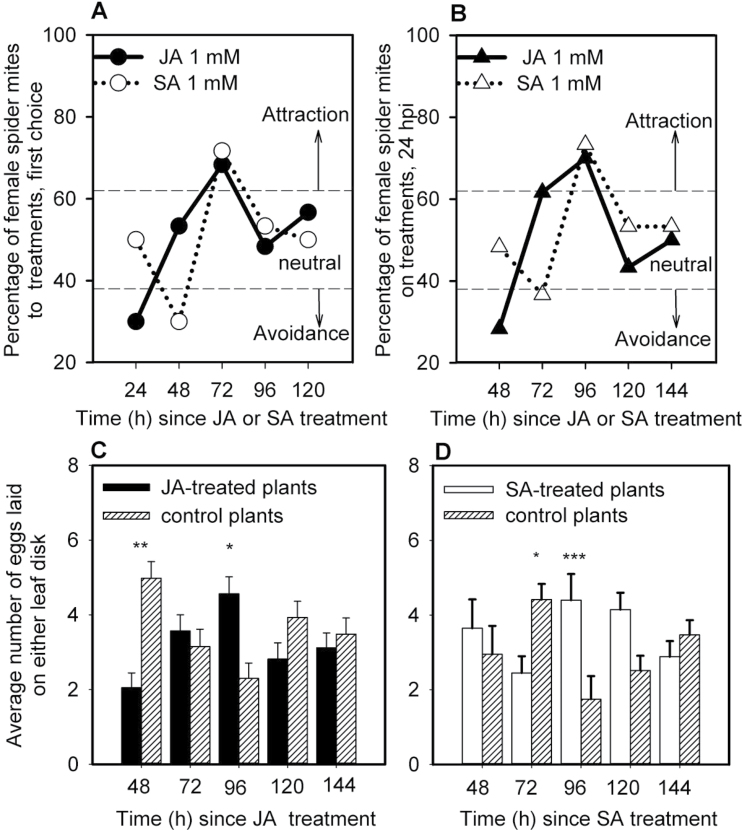Fig. 1.
Time course of the effect of JA- or SA-treatment on female mite choice behaviour and oviposition on leaf disks cut from Lima bean plants just before the experiment. (A) Percentage of mites choosing leaf disks treated with 1mM JA or 1mM SA as first choice within 15min. (B) Distribution of mites over JA- or SA-treated leaf disks 24h post-inoculation (hpi) in the arena. (C) Number of eggs laid by female spider mites on JA-treated Lima bean disk versus that on control leaf disk (mean±SE) during 24h. (D) Number of eggs laid by mites on SA-treated Lima bean disks versus that on control leaf disk (mean±SE) during 24h. These experiments were repeated three times at three different days, each with 20 mites. Thus, in total 60 mites were individually studied for each treatment and time point (n=60; data of the individual replicates are provided in Table S1). In A and B data points located in areas above or below dashed lines indicated by arrows designated ‘attraction’ or ‘avoidance’ indicate a choice distribution significantly different from a 50:50 distribution (α=0.05, χ2 test); (see Supplementary Table S1 for details of the statistical analyses). In C and D, data within a time point are analysed with a paired two-tailed t-test, * P<0.05, ** P<0.01, *** P<0.001 (see Supplementary Table S2 for details of the statistical analyses). Before parametric analysis, oviposition data were log (x+1) transformed to correct for heterogeneity of variances.

